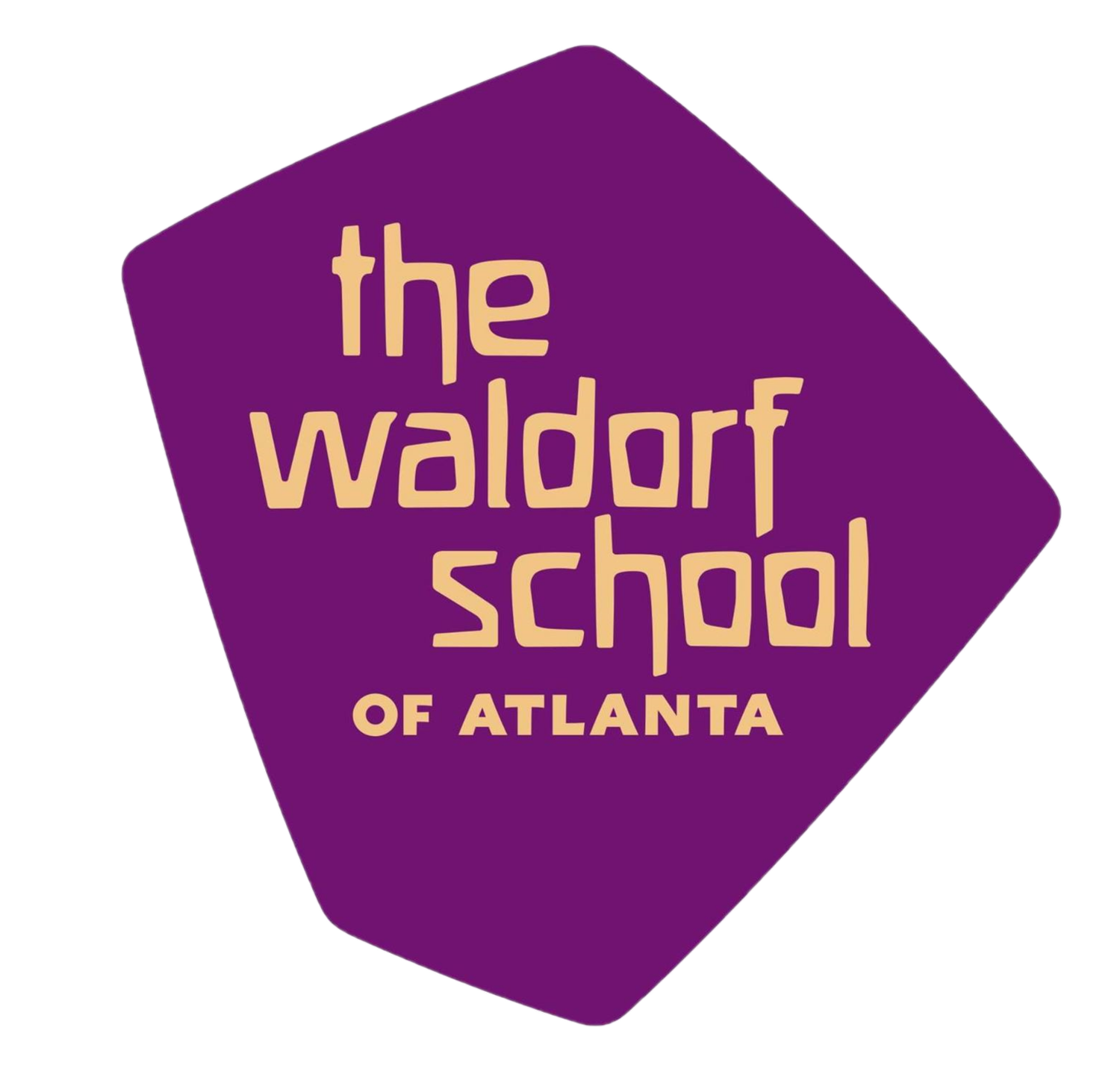Waldorf Specialty Subjects
Waldorf Foreign Language
Spanish is offered at The Waldorf School of Atlanta to all students. It is a dynamic program where language is offered through culture, music, games, cuisine, storytelling, crafts, singing, and dancing. From the content of these activities, children absorb the Spanish culture and its passions. As children create their own journals and diccionario, they learn grammar and reinforce their knowledge of the spoken language. Using the unique rhythm of each Latin American country, students learn the geography and history of that region. Throughout the year, students prepare for and celebrate colorful, seasonal fiestas.
At The Waldorf School of Atlanta, we begin simply in grades one through three by immersing the children in the spoken language. In the first three grades, the children are given the sound and feel of the language through verses, songs, and finger plays. Stories and games help the children deepen this experience. In these grades all work is oral, with no reading or writing.
As students enter grade four and are fairly adept at reading and writing English, we introduce the alphabet to them. While visually almost identical to our own alphabet, the foreign alphabet represents very different sound qualities. In order to help the children quickly make the connection between the letters and their sounds, we begin by writing out and reading aloud verses the children learned by heart in previous years. Soon the children are able to read Spanish aloud almost as well as they read English. In grade five, we revisit stories heard aloud in previous grades, in a printed form and begin more focused work with grammar.
The work of the middle school years is a bit more rigorous. We pull the language apart to study its nuances. We make more comparisons to English, discerning both the similarities and differences between the languages.
Spanish is taught by Mr. Will Linares
“Childhood is not a race to see how quickly a child can read, write, and count. Childhood is a small window of time to learn and develop at the pace which is right for each individual child.”
Waldorf Music
Music is an essential part of the Waldorf curriculum and permeates the school day from kindergarten through eighth grade. Music not only enlivens the spirit but increases a child's capacity for learning. Through the study of music, we learn to sensitize our hearing, allowing us to better listen to the sounds of the world and to each other.
The Waldorf music teacher takes a primary interest in each child's musical development but other adults also contribute to and support these efforts. The class teacher plays a vital role either by singing with the class and/or by playing recorder with them. The relationship each student develops with his or her private teacher is an important one, while parents help by supporting concentrated and regular practice times at home.
More information on our Music program
Our Music teacher is Lisa Port
Our Orchestra Director & Violin Teacher is Jessica King
Waldorf Gardening
The gardening program at WSA offers children a chance to learn the practical skills of caring for themselves and the earth while bringing to life the academic work of the classroom. In the early grades, the gardening curriculum emphasizes reverence for nature, care for the environment, and respect for each other. Early gardening activities foster the students' powers of observation that become vital in later gardening years. Stories and song are used to introduce gardening themes and jobs such as the life cycle of plants, facts of the natural world, and seasonal changes. The skills taught in gardening such as tool care and cleaning, harvesting, saving seed, and extensive weeding and bed preparation strengthen the will, support physical growth, and teach responsibility.
In third grade gardening comes into full focus. The themes in third grade gardening include, turning feelings of separation and change into responsibility for self and world, grounding the feeling world in concrete reality, and learning to trust the interconnections of all life forms. In third grade, all practical gardening activities are taught and regularly done. This includes weeding, watering, harvesting, planting, bed preparation, biodynamic preparations, collecting compost, chicken care, and mulching. The children continue these tasks in later gardening years.
After the foundation of the early years, the gardening curriculum continues to expand the children's practical skills while shifting to a focus on social responsibility and relationship of self to the world around. In the middle school, this takes the form of lessons on Permaculture and Food Justice. As the children grow, the gardening curriculum meets their physical needs with more strenuous work. The students' growing sense of independence allows for more individual projects and responsibilities. The overall hope of the gardening program at WSA is that each child takes away a sense of being needed by the world around them and practical skills they can use to fill those voids.
Our Gardening Teacher: Maurice Small
Our Gardening Assistant: Maggie Withum
Waldorf Handwork
As human beings, we use our hands regularly in our daily lives. At Waldorf, the Handwork curriculum is broad and includes skills such as knitting, crocheting, hand sewing, embroidery, felting, paper crafts, pattern design, and machine sewing.
Many of the benefits of the Handwork program are obvious: hand-eye coordination; basic math skills such as counting, the four math processes, and basic geometry; the ability to understand and follow a process from concept to completion; and the ability to focus on a project for an extended period of time.
There are also more subtle rewards that complement these obvious benefits. Students must prepare and care for materials. Many of the created items have a practical use – a case for a flute, a needle book, a pair of socks. Design and color choice allow for individual creative expression. One of the most far-reaching benefits of Handwork class is the social aspect. While there are times when quiet is needed, such as when you are learning a new stitch, most of the time the atmosphere in the classroom is social and conversational, not unlike a quilting bee. Students learn to speak politely to one another. Throughout the process, respect is fostered.
At the Waldorf School of Atlanta all first graders learn how to knit. This basic skill uses both right and left hands, and brings a steady, calming rhythm to the younger child. Crocheting, which emphasizes the right or left hand, almost always follows in the second or third grade. Cross-stitch is paramount to fourth grade as the children begin crossing over from childhood to adolescence. In fifth grade, knitting in the round, used to make hats, mittens, and socks, is a three dimensional, mathematical activity leading up to critical thinking in the middle school. Long-term hand-sewing projects involving concepts, patterns, and mathematical computations are usually found in sixth or seventh grade. The eighth grade Handwork curriculum often involves machine sewing, which perfectly integrates the student's study of American History and the Industrial Revolution.
Our Handwork teachers are Lisa Roggow and Hooi Luen Ong
Waldorf Woodworking
The purposeful task performed with hand tools and wood parallels the intentional work and responsible laborers of the outside world.
Woodworking begins in grade five when students harvest wood from nature and use hand tools to give it form and function. Students are introduced to botany and the properties inherent in various woods. Their senses are awakened to many experiences: their hands begin to develop strength; hand and eye coordination improves with the repetition of movement; and technique is developed.
In the sixth grade the use of a ruler is introduced to create accurate measurements. Projects are conceived on paper and then fabricated methodically. By this process, the student can learn to make that which he learns to conceive. During this year students are introduced to the history of woodworking and are assigned a research report accompanied by a presentation. Projects this year help prepare the way for geometry and perspective drawing in the seventh grade.
By grade seven, the adolescent student is looking more into themselves. They are studying the Middle Ages, the Renaissance period and the age of exploration. In this year, the students’ woodwork projects have moveable parts. They are introduced to wood block printing where their printed images are created by extracting light from dark. New math skills in proportions and geometry are applied to the construction of a working moveable model.
In the eighth grade the students are more aware of their physical world and their personal appearance. This year they are challenged by projects that are layered with detailed processes and problem solving. Students increase their focus and continue to refine their accuracy, creativity, and most of all, patience. This year's work helps develop endurance and confidence in preparation for high school.
Our Woodworking teacher is Francisco Moreno.
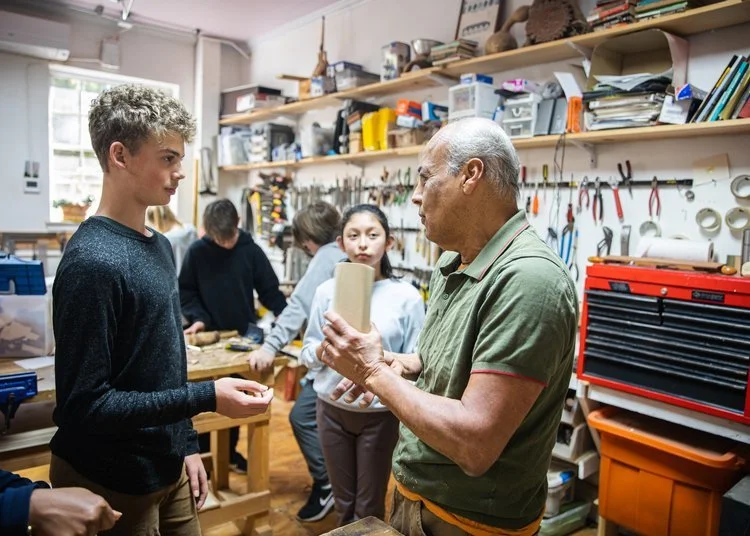
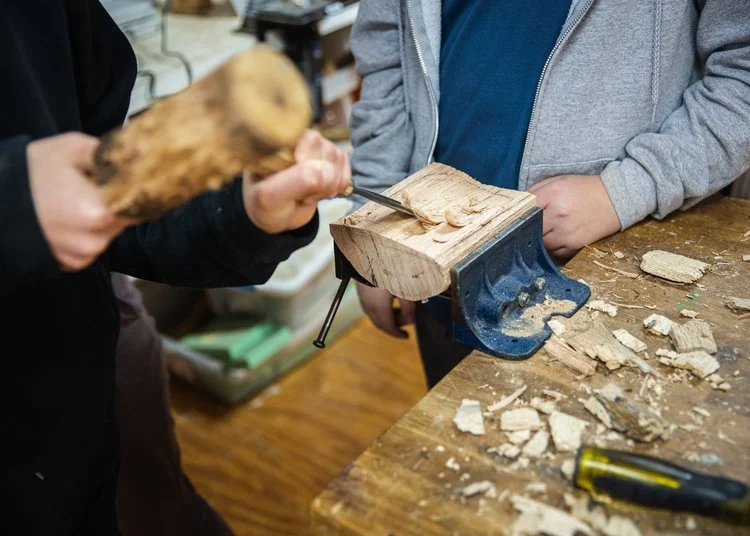
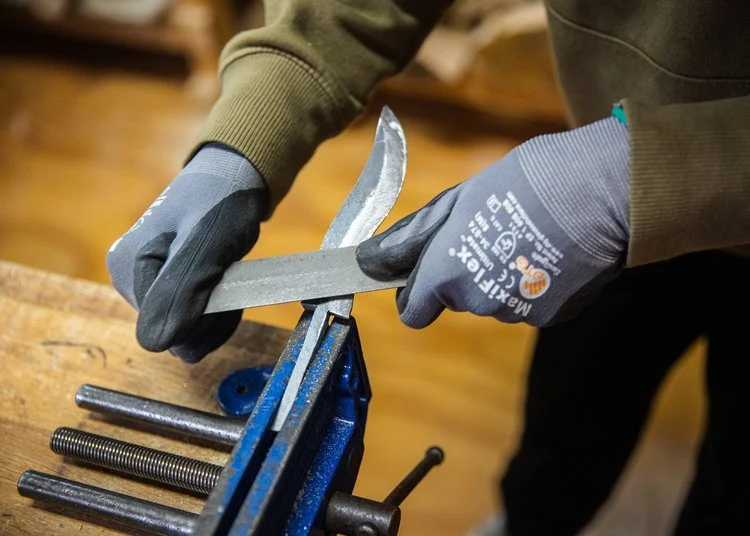
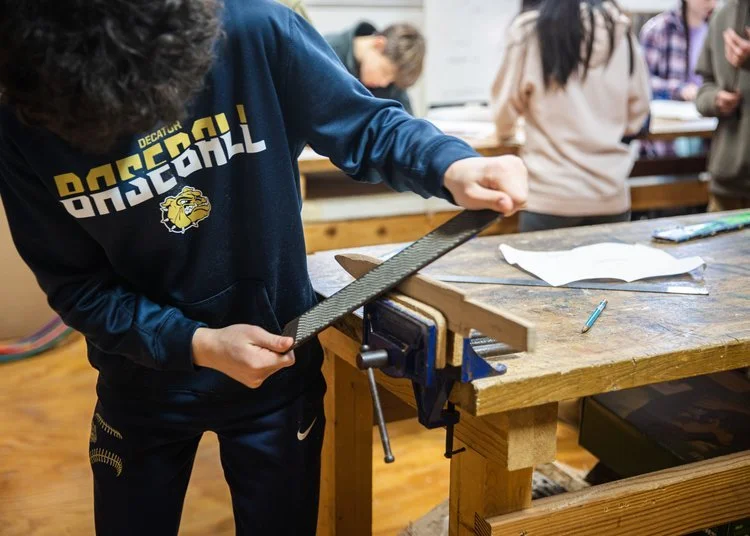
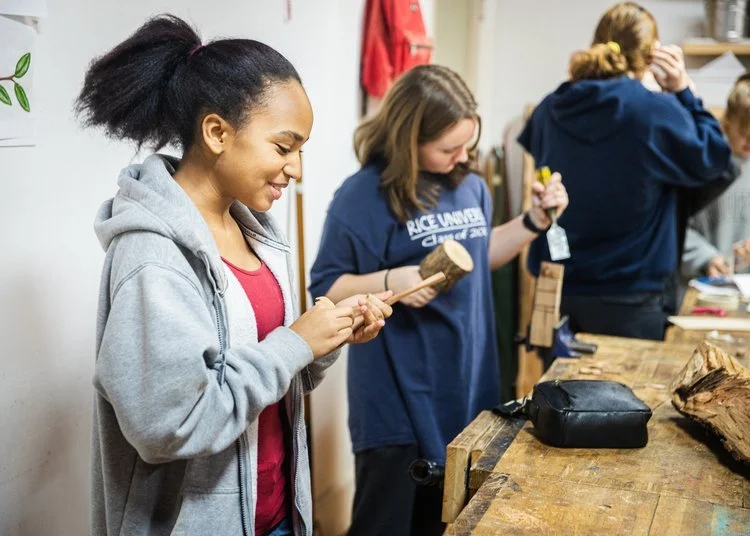

Waldorf Eurythmy
A unique component of the Waldorf curriculum from the beginning, Eurythmy is an artistic form where music and speech are expressed through movement and gesture. It is this artistic expression of language through story and verse that separates Eurythmy from classical dance.
In kindergarten and the early grades, the students explore aspects of music and poetry through storytelling. They experience geometry, spatial directions, coordination (both gross and fine motor skills), as they work together in a group. The students gain in strength, stamina, dexterity, and agility as they express themselves through artistic movement.
Beginning in the third grade, students start to work on individual movement skills. As students advance through the grades, the material becomes increasingly more challenging and complex as they apply aspects of grammar, arithmetic, geometry, music, history and many other subjects. While students develop memory, listening, sequencing and concentration skills, they begin to work creatively by developing their own choreographies.
The Eurythmy program is designed to support each step of the students' academic growth. The lessons reflect the work of the Main Lesson and reinforce the learning in other subjects. Each grade is met with age-appropriate material in music, verse and story, which increases students' intellectual, artistic and social development. By deepening their understanding of language arts, together with the performing arts, students benefit from the interconnectedness of all aspects of the Waldorf curriculum.
Our Eurythmy Teacher is Laira Covert and Eurythmy Assistant is Lisa Novak.
Waldorf Movement & Games
Just as Waldorf schools honor the natural unfolding of the developing human being in determining the academic curriculum, Movement Education springs from this same understanding. In a culture where organized team sports hold such high status, children can sometimes think of movement only in those terms. The Movement Education curriculum gives students basic coordination and movement skills that will help them if and when they decide to play organized sports. Depending on the grade, children will play games, do relay races, or learn dances that serve to develop skills that may also be beneficial for a conventional sport.
Not only does a movement class provide the opportunity for children to play games and have fun, it also works with their social interaction: their activity teaches them to play with each other before they play against each other, to acknowledge each other, to play safely, and to gain an appreciation for all kinds of movement. Movement Education enables students to move fully, know who they are, and enter into a more healthy relationship with the world and its requirements.
In the early years, kindergarten teachers introduce movement through imitation of daily activities, circle games, singing and imaginative play. Movement in kindergarten is crucial for establishing social and communication skills as well as laying the ground for cognition.
In grades one through five, movement education is taught through various games to help develop an enhanced awareness of personal space, with clearly defined boundaries. Physical activity is emphasized through games using imagery, story, rhythm and imitation. In the fifth grade there is a focus on beauty and form, and in the spring the fifth graders participate in the Olympic Games, a gathering of fifth grade classes from several regional Waldorf schools.
In grades six, seven, and eight, more conventional sports are introduced into the physical education curriculum. Only now can the children have a real respect for the law of rules and understand how a team works together. At the same time, they are developing their own self-discipline and competitive nature. They aspire to a finer exactness, technique, timing and spirit of the law, as they also become more aware of the world.
Our Movement and Games teacher is Francisco Moreno
